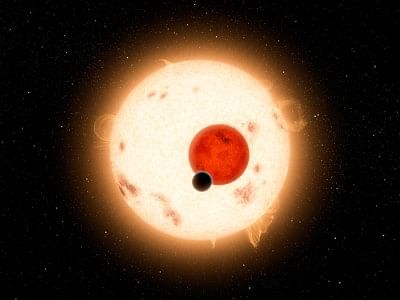<i>A planet with a double sunset</i>

When the day ends on planet Kepler-16b there is a double sunset, scientists reported on Thursday in the journal Science.
In a scene reminiscent of science fiction, researchers using observations from Nasa's Kepler spacecraft have detected a distant planet orbiting two waltzing stars, the first time such a phenomenon has been confirmed.
"This is really a stunning measurement by Kepler," said Alan Boss of the Carnegie Institution for Science, a co-author of the study. "The real exciting thing is there's a planet sitting out there orbiting around these two stars."
Binary stars -- two suns turning around each other -- have been seen before, and astronomers have suspected planets exist around them, but Kepler's observations are the first to confirm it.
Kepler's mission is to scour our section of the Milky Way galaxy for Earth-like planets in the so-called "habitable zone" that is not too close and not too far away from the stars they orbit.
The spacecraft does this by finding stars whose light periodically gets dimmer, which means there is an orbiting astronomical body -- a planet -- passing between the star and Kepler's instruments. This is known as a planetary transit.
What made this find so eye-popping was that the stars were eclipsing each other as first one and then the other got in the way. And then a third eclipse indicated a planet was part of the system.
If the notion of a planet with two suns seems familiar, it may be because it was displayed in the earliest "Star Wars" film on the fictional planet Tatooine, home of Luke Skywalker.
Because both of its suns are smaller and cooler than our sun, Kepler-16b would be quite cold, with a surface temperature of around minus 100 to minus 150 degrees F, the study said.

 For all latest news, follow The Daily Star's Google News channel.
For all latest news, follow The Daily Star's Google News channel. 



Comments